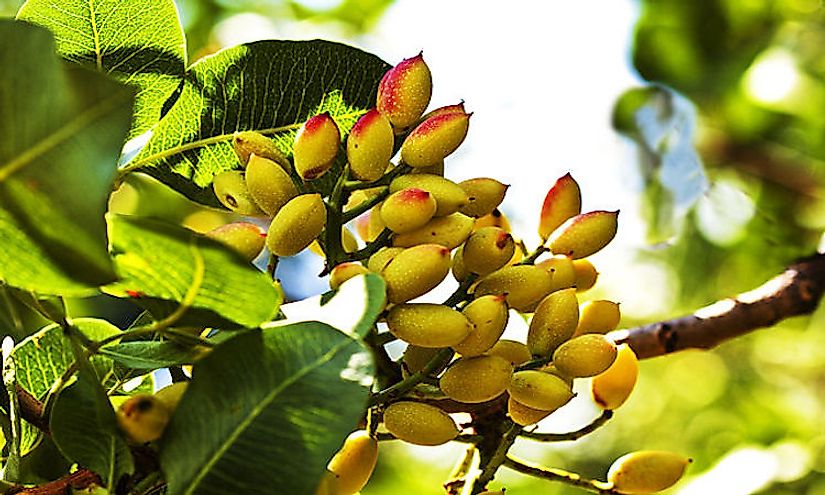Where Do Pistachios Come From?

What Are Pistachios?
Pistachio is a dry fruit from the pistachio tree; a small tree with origins in the Middle East and Central Asia. The pistachio tree belongs to the cashew family. Their fruit is a drupe that contains an elongated seed; it is this seed that people eat. The seed is a culinary nut, rather than a botanical nut, and has a distinct flavour.
Pistachios are a very popular food, especially in China, which is the top consumer of pistachios in the world, followed by the United States. A member of the cashew family, pistachio kernels are eaten whole, fresh or roasted. Other uses of the pistachio include in pistachio ice cream, in spumoni, in kulfi, in pistachio butter, in pistachio chocolate, in pistachio pudding, among a myriad of other creative uses. A highly nutritious food, pistachios have 562 calories per serving and are rich in protein, dietary fibre, Vitamin B, among other nutrients.
Where Do Pistachios Grow?
With its high tolerance of saline soil, the pistachio grows in the desert and flourishes when irrigated with water containing 3,000 to 4,000 ppm of soluble salts. The hardy trees can survive in a temperature range of between -10oC during winter and 48oC during the summer. Pistachio trees require plenty of sun and soil that is well drained. They do not do well in highly humid environments. Their roots rot when water is excess, and the soil is not well-drained. Pistachio fruit needs long, hot summers for ripening. Pistachio growing countries include Greece, the US, Turkey, Iran, China, and Syria.
Pistachio Cultivation
Pistachio trees, which are customarily grown in orchards, reach significant production levels after seven to ten years, and peak production after a 20 year period. Pruning of the trees makes the harvesting process easier. A male pistachio tree carries enough pollen for 12 drupe-bearing females, and farmers in the US and Greece have to use equipment to shake the drupes off the tree at harvest time (another name for drupes is stone fruits). The pistachios are hulled, dried in the sun, and then sorted into two groups, the open-mouth and closed-mouth shells. Afterward they are roasted; alternatively, special machines are used to produce pistachio kernels. Pistachio trees are prone to diseases such as infection by Bostryospaheria fungus, which causes the death of the young shoots and the flowers and can affect the entire orchard.
Top Producers Of Pistachios
The top producers of pistachios in the world are Iran at 478,600 metric tons, the United States at 196, 930 metric tons, Turkey at 88,600 metric tons, China at 74,000 metric tons, and Syria producing 54,516 metric tons. At an annual rate of 80,000 tons, China is the highest consumer of pistachios worldwide, with the United States following at 450,000 tons. Iran, the US, and Turkey account for more than 80% of production of pistachios worldwide.
Pistachios are a nutritious, delicious, and popular food, and different cultures have found different ways of eating them. For instance, Americans love pistachio salad, which comprises fresh pistachios, whipped cream, and canned fruit. In recent years, there has been a spike in popularity of pistachios, and more farmers are growing them.
Where Do Pistachios Come From?
| Rank | Country | Production (metric tonnes) | |
|---|---|---|---|
| 1 | Iran | 4,78,600 | |
| 2 | United States | 1,96,930 | |
| 3 | Turkey | 88,600 | |
| 4 | China | 74,000 | |
| 5 | Syria | 54,516 |







